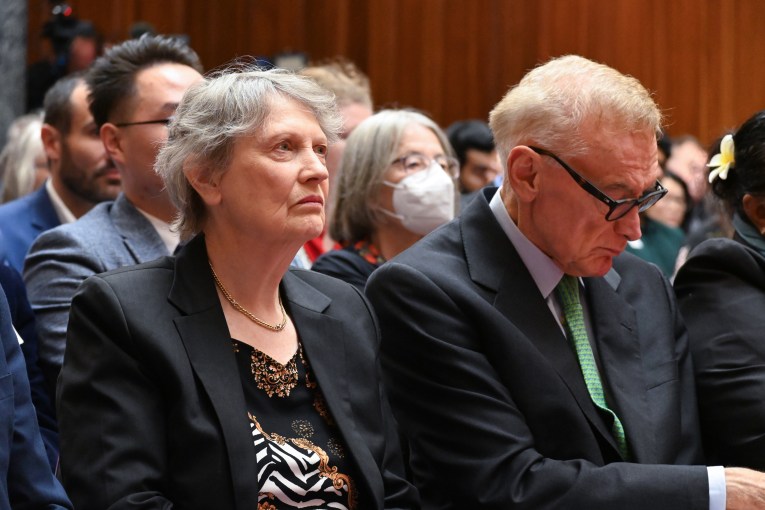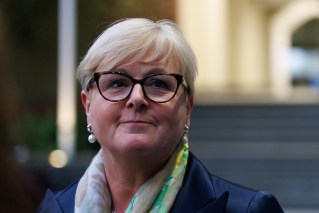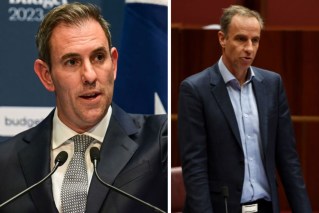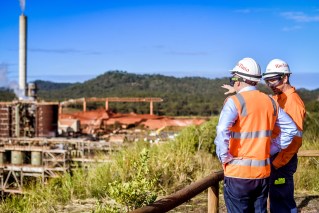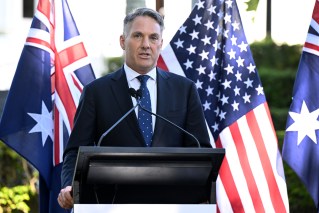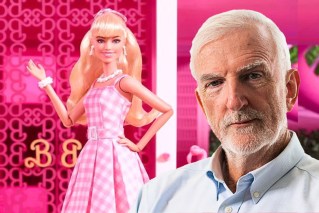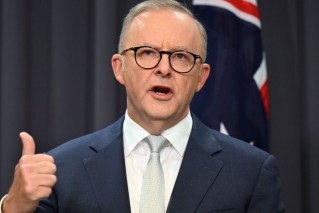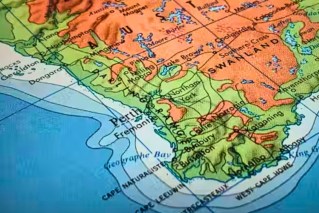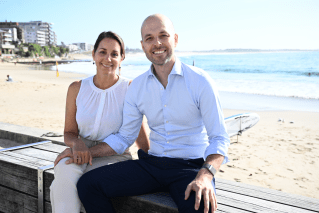Australians urged to work from home and wear masks indoors

Employers are being urged to let staff work from home amid warnings there are twice as many COVID cases in the community as being reported officially.
In new advice published on Tuesday, Federal Chief Medical Officer Paul Kelly said employers should review their health-and-safety policies to help slow the spread of highly infectious Omicron sub-variants.
“They should consider the feasibility of some employees working from home, wearing masks in the workplace and support employees to take leave when sick,” Professor Kelly said.
Speaking alongside Professor Kelly at a press conference in Canberra, Health Minister Mark Butler said the actual number of Australians infected with COVID-19 was likely far higher than the official numbers suggested.
“This third Omicron wave for 2022 is proving to be a very, very significant one,’’ Mr Butler said.
“There were 300,000 cases or thereabouts reported over the last seven days, and I think the CMO and I are pretty confident that the real number is likely to be more than double that.
“We are seeing hundreds and hundreds of thousands of Australians infected every single week in this wave. As of today, there are more than 5200 Australians in hospital with COVID. That number has increased very dramatically over recent weeks.”
The push for more working from home coincided with updated advice from state governments in South Australia and Victoria that students should wear masks indoors at school.
Indoor masks at schools
SA Health Minister Chris Picton said students would be encouraged to wear masks when they return to school next week, after modelling predicted COVID hospitalisations in the state would rise from 282 on Tuesday to above 400 in coming weeks.
“That’s not going to be a mandated situation like we’ve had previously, but it will certainly be encouraged,” he said.
Mr Picton also revealed that non-urgent and overnight admissions for elective surgery in metropolitan hospitals would be halted to alleviate growing pressure on the health system.
“This will be reviewed on a weekly basis over the next four weeks,” he said.
“We’ve established a task force of surgeons to work out how we can plan elective surgery better.”
The move by the two states came as more than 50,000 COVID infections were confirmed across Australia on Tuesday. There were also a further 75 fatalities.
‘Mandate by stealth’
Mr Picton’s briefing came after Victorian Deputy Premier Jacinta Allan was forced to defend accusations the government had introduced a “mandate by stealth” with the recommendation that students wear masks indoors at school.
Ms Allan said the letter sent to school communities – signed by the heads of public, independent and Catholic schools – on Monday night was “entirely consistent with the advice” given by the state’s health minister last week.
“Nothing’s changed,” she said.
The letter contained a “strong recommendation” that students wear mask indoors.
“We’re asking all students aged eight and over and staff to wear masks when in class from now to the end of winter,” it read.
“Children won’t be required to wear masks when they are outdoors.”
It came after the Victorian government was criticised last week for rejecting advice from the state’s chief health officer to introduce an indoor mask mandate.
Despite doctors and epidemiologists warning of growing pressure on Victoria’s health system, the government chose instead to strongly recommend indoor mask wearing instead of introducing statewide mandates. Ms Allan reaffirmed that position on Tuesday.
“Wearing masks indoors is not that hard to do,” she said.
“The advice is a strong recommendation for masks to be worn indoors.”
VIC reports 25 deaths
Victoria reported 12,201 cases on Tuesday, along with 25 more fatalities and 897 patients with the virus in the state’s hospitals.
Victorian Health Minister Mary-Anne Thomas said the recommendation for masks in schools was not a mandate, but it was her advice.
“This is what we want to see, the advice being distributed through as many channels as possible,” she told ABC radio in Melbourne.
Tweet from @bridgerollo
The recommendation came as a leading virus expert called for a rethink of Australia’s COVID-19 strategy.
As numbers continue to climb in the latest spike of Omicron cases, Burnet Institute chief executive Brendan Crabb said health authorities should be looking at interventions to keep case numbers at a steady, low level.
“We had this model that says it doesn’t really matter how much COVID is in the community, we want to protect out elderly and most vulnerable people and keep our hospitals running. That strategy has chosen or proven not to work very well,” he told the ABC.
“We are going through a rise at the moment that should peak sometime in the next month – it looks like a very worrying high level, but they never go low.”
COVID reset needed
Professor Crabb said a reset was needed to help get cases to a lower baseline level, involving more vaccines, measures for more clean air, as well as testing and isolation.
He indicated a collective mentality was needed to work together on renewing virus strategies – and that without this more large waves of cases were on the cards.
“We’re getting there – we’re just a long way behind the eight ball. We have this ‘COVID is in the rear-view mirror’ mentality,” he said.
Nearly 5000 people are in hospital nationwide.
While case numbers are increasing, some have called for a relaxation of isolation requirements for people with the virus.
NSW Premier Dominic Perrottet wants a review of isolation requirements for workers who have tested positive, citing a need to balance competing health issues.
However, the comments were at odds with the stance of Prime Minister Anthony Albanese. He said health officials would continue to examine isolation measures, but the current spike in infections meant it wasn’t the right time to change existing requirements.
Employees who test positive and are unable to work and access sick leave will be able to access the $750 isolation payment from Wednesday, following moves by the government to reinstate the payments.
They will be in effect until the end of September, with the cost shared between the Commonwealth and states and territories.
Treasurer Jim Chalmers said the government remained flexible on a possible extension to the September 30 deadline.
Australia’s latest 24-hour COVID data
NSW: 13,554 cases, 26 deaths, 2205 in hospital with 60 in ICU
Victoria: 12,201 cases, 25 deaths, 897 in hospital with 34 in ICU
Northern Territory: 671 cases, no deaths, 63 in hospital, one in ICU
Queensland: 9992 cases, 18 deaths, 983 in hospital, 24 in ICU
Tasmania: 1642 cases, no deaths, 184 in hospital, two in ICU
South Australia: 4172 cases, 3 deaths, 282 in hospital, 11 in ICU
ACT: 1221 cases, no deaths, 170 in hospital with six in ICU
Western Australia: 6815 cases, three deaths, 455 in hospital with 20 in ICU
-with AAP
